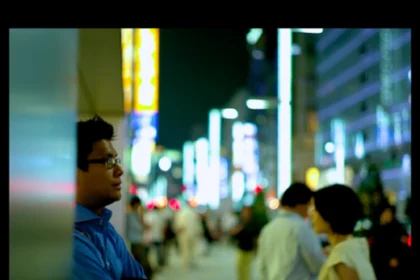The fashion industry is undergoing a dramatic transformation as thrifting gains popularity over fast fashion. This shift is driven by more than just cost-saving; it’s a cultural movement thriving on social media. 🌟
The Rise of Thrifting
Thrifting has outgrown its niche roots and entered the mainstream, especially among Gen Z and Millennials. These groups are increasingly aware of the environmental implications of their shopping choices. Fast fashion, notorious for its throwaway clothing and unsustainable methods, is being shunned in favor of greener alternatives.
Environmental Impacts Fueling the Shift
The environmental toll of fast fashion is colossal. The Ellen MacArthur Foundation reports that the fashion industry accounts for 10% of global carbon emissions, also causing water pollution and landfill overflow. Thrifting provides a more sustainable option by encouraging recycling and minimizing waste. ♻️
The Role of Social Media in thrift Culture

Social media platforms like TikTok, Instagram, and Reddit are propelling the secondhand fashion movement forward. Influencers and regular users alike are showcasing their vintage hauls, styling tips, and DIY upcycling projects. The hashtag #ThriftFlip has garnered millions of views on TikTok, highlighting innovative ways to revamp pre-loved items into stylish outfits.
Reddit’s Thrift Enthusiasts
On Reddit, communities like r/SecondhandStyle showcase users’ best finds and the excitement of the hunt. As one user shared, “Found a vintage leather jacket for $10! It’s hard to believe people still opt for fast fashion when you can discover treasures like this. 😍”
Trending on TikTok
TikTok is brimming with thrift-related videos. Creators highlight the environmental advantages of thrifting with captions like “Save the planet, one thrifted piece at a time! 🌎✨” These videos not only entertain but also raise awareness about sustainable fashion.
Economic Advantages of Thrifting
The financial appeal of secondhand shopping is significant, especially with rising inflation. Many consumers are seeking ways to economize, and resale stores offer stylish, affordable options. The varied selection allows for unique wardrobe curation without breaking the bank.
Getting Started with Thrifting
–Research Local Secondhand Stores: Discover the top resale shops in your area via Yelp and Google reviews.
–Define Your Needs: Have a wishlist, but stay open to unexpected discoveries.
–Quality Check: Examine items for damage or wear; some may just need a bit of care.
–Fit Matters: Always try on garments to ensure they fit well.
–Patience Pays Off: Secondhand shopping is a treasure hunt, with occasional great finds.
Looking Ahead: A Sustainable Fashion Future
As the secondhand fashion movement gains serious traction, it’s clear the industry is being nudged—if not shoved—toward a more sustainable future. Consumers are no longer content with throwaway trends or murky supply chains. Instead, they’re prioritizing purpose over brand names, and value over volume. This cultural pivot has pressured even major fast fashion giants to adapt, with some launching eco-conscious collections that incorporate recycled fabrics, organic cotton, or upcycled materials.
Zara, H&M, and even Shein (yes, seriously) have dipped their toes into sustainability, though critics often argue it’s more marketing than meaning. Still, the shift is happening—and transparency is becoming the hottest thing a brand can wear. From carbon footprint disclosures to supply chain audits, the fashion world is being held accountable like never before. In this new era, ethical fashion isn’t just niche—it’s trending.
Want to see what that looks like on the ground? Just scroll through TikTok under #SustainableStyle or check out Reddit’s r/FrugalFashion. The revolution isn’t on a runway—it’s in your neighborhood thrift store and your favorite influencer’s closet.
FAQ
Q: What makes fast fashion problematic?
A: Fast fashion harms the environment, exploits labor, and fosters a culture of disposability.
Q: How do I start shopping secondhand?
A: Begin by identifying local secondhand shops, knowing what you want, and embracing the unexpected.
Q: Is thrifting more eco-friendly than purchasing new clothes?
A: Absolutely, as secondhand shopping minimizes waste, supports recycling, and reduces the demand for new production.
Q: Which secondhand fashion hashtags are popular on social media?
A: Popular hashtags like #ThriftFlip, #SustainableFashion, and #SecondhandHaul highlight vintage finds and sustainable fashion advice.
Ultimately, the viral secondhand movement is more than just a trend; it’s a counter to the fast fashion industry’s unsustainable practices. As more individuals shift to resale fashion, the industry is evolving, paving the way for a more sustainable future. 🌍









